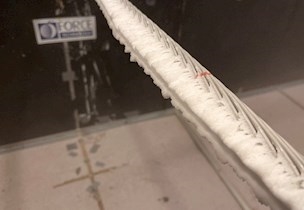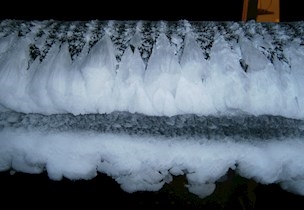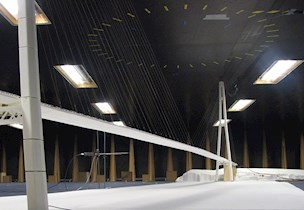Climatic wind tunnel
In our climatic wind tunnel, we can test how bridge cables respond to various climatic conditions, and thereby also which measures are necessary to ensure safer bridges.
Testing how various weather conditions (wind, rain, ice) affect bridge cables
Due to the technological development, it is possible to construct bridges longer and lighter than formerly possible. The limits for maximum bridge spans are constantly being pushed, which in turn result in longer and more flexible cables. Cables on cable-supported bridges may be subject to strong vibrations when exposed to wind and such vibrations may damage the cables or other structural members of the bridge.
One of the challenges is ice accretion on bridge cables in cold regions. Ice accretion on the cables may affect both the aerodynamic properties of the cables and the safety of traffic as blocks of ice may fall off the cables and down on the road.
The climatic wind tunnel allows us to identify how cables respond to various climatic conditions, and to recommend measures are necessary to ensure safer bridges.

A unique test facility allowing full-scale tests of cables
The climatic wind tunnel is unique because it is sufficiently large and is designed to test cable sections in full scale. When exposing cables to different weather conditions like rain or ice, it is not possible to obtain reliable results when the models have been scaled down, consequently full-scale tests are necessary.
Full-scale tests provide realistic results and data which the designer can easily implement in the further effort to improve the bridge cables.




